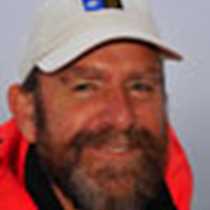Islas Cies & Baiona, Vigo, Spain
After a golden sunset at Cabo Finisterre last night, it was a short trip south to Vigo in north-west Spain. This deep inlet on the Atlantic coast is sheltered by a crescent of rugged granite islands several miles offshore; we dropped anchor in their lee, the crimson glow of dawn already over the mainland hills. Ferried ashore before the sun was high, we landed like pirates on a coastline of white quartz sand dunes, and fanned out to explore the hinterland. Past dunes brightened by yellow toadflax, pink campion and white lilies, we were soon in the shelter of tall pine trees. One group went west towards the lagoon and distant white lighthouse, pausing on the causeway to gaze down at languid grey mullet cruising through limpid water. The other party ventured east, climbing steadily through the pinewood to calls of wren, chaffinch and titmice high up in the trees. Soon we were among soaring eucalyptus, planted to try and reforest these barren islands. The granite here is ancient and very hard, sparkling with mica crystals. It breaks down slowly to leave sharp, acid sand, made harsher by the salt winds of winter: some of the trees on the ridge were bent double from the ravages of winter storms. But our day was one of Mediterranean calm, butterflies dancing in the forest glades and robins still singing from path side perches. Once we reached the top, there was a spectacular panorama from a sculpted granite pulpit on the cliff edge, out over blue sea and unbroken blue sky.
During lunch National Geographic Endeavour moved inshore and anchored just off Baiona, a sheltered harbour founded eight centuries ago. It was here that the Pinta, the first of Columbus' three ships to return, docked in 1493 with astounding tales of the New World. Now a thriving seaside resort, it is still dominated by a 16th fortress called Fortaleza Monterreal, sheer granite walls defending it on all sides. For the bargain entry price of a single euro, we walked the ramparts, gazing down on the modern marina, golden beaches, red-pantiled houses, and our trusty ship gleaming white out on the ultramarine bay. Looking out over fortress cannons from the sawtooth battlements, we could see the pirate islands of Cies shimmering on the horizon. Our journey from Denmark to Portugal has brought us through six countries and a dozen cultures. From the young sediments of the Baltic Plain to the ancient granites of Galicia. From the vibrant new cities of northern Europe to the ancient strongholds of Celt, Phoenician and Basque. No day has matched this for the sublime atmosphere of the Atlantic coast, nor the calm to reflect on our great fortune as 21st century mariners.
After a golden sunset at Cabo Finisterre last night, it was a short trip south to Vigo in north-west Spain. This deep inlet on the Atlantic coast is sheltered by a crescent of rugged granite islands several miles offshore; we dropped anchor in their lee, the crimson glow of dawn already over the mainland hills. Ferried ashore before the sun was high, we landed like pirates on a coastline of white quartz sand dunes, and fanned out to explore the hinterland. Past dunes brightened by yellow toadflax, pink campion and white lilies, we were soon in the shelter of tall pine trees. One group went west towards the lagoon and distant white lighthouse, pausing on the causeway to gaze down at languid grey mullet cruising through limpid water. The other party ventured east, climbing steadily through the pinewood to calls of wren, chaffinch and titmice high up in the trees. Soon we were among soaring eucalyptus, planted to try and reforest these barren islands. The granite here is ancient and very hard, sparkling with mica crystals. It breaks down slowly to leave sharp, acid sand, made harsher by the salt winds of winter: some of the trees on the ridge were bent double from the ravages of winter storms. But our day was one of Mediterranean calm, butterflies dancing in the forest glades and robins still singing from path side perches. Once we reached the top, there was a spectacular panorama from a sculpted granite pulpit on the cliff edge, out over blue sea and unbroken blue sky.
During lunch National Geographic Endeavour moved inshore and anchored just off Baiona, a sheltered harbour founded eight centuries ago. It was here that the Pinta, the first of Columbus' three ships to return, docked in 1493 with astounding tales of the New World. Now a thriving seaside resort, it is still dominated by a 16th fortress called Fortaleza Monterreal, sheer granite walls defending it on all sides. For the bargain entry price of a single euro, we walked the ramparts, gazing down on the modern marina, golden beaches, red-pantiled houses, and our trusty ship gleaming white out on the ultramarine bay. Looking out over fortress cannons from the sawtooth battlements, we could see the pirate islands of Cies shimmering on the horizon. Our journey from Denmark to Portugal has brought us through six countries and a dozen cultures. From the young sediments of the Baltic Plain to the ancient granites of Galicia. From the vibrant new cities of northern Europe to the ancient strongholds of Celt, Phoenician and Basque. No day has matched this for the sublime atmosphere of the Atlantic coast, nor the calm to reflect on our great fortune as 21st century mariners.




